How to install VirtualBox?
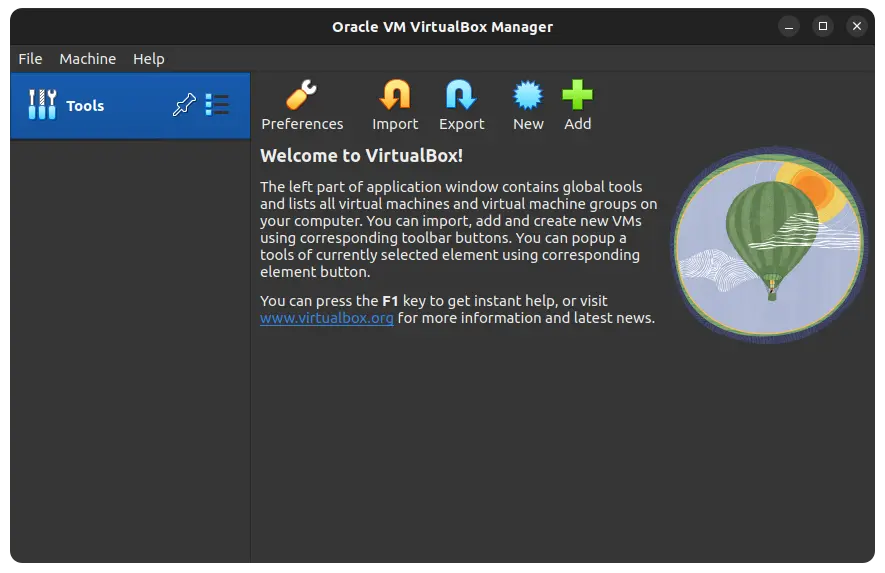
VirtualBox is a powerful x86 and AMD64/Intel64 virtualization product for enterprise as well as home use. Not only is VirtualBox an extremely feature rich, high performance product for enterprise customers, it is also the only professional solution that is freely available as Open Source Software under the terms of the GNU General Public License (GPL) version 3.
Presently, VirtualBox runs on Windows, Linux, macOS, and Solaris hosts and supports a large number of guest operating systems including but not limited to Windows (NT 4.0, 2000, XP, Server 2003, Vista, Windows 7, Windows 8, Windows 10), DOS/Windows 3.x, Linux (2.4, 2.6, 3.x and 4.x), Solaris and OpenSolaris, OS/2, and OpenBSD.
VirtualBox is being actively developed with frequent releases and has an ever growing list of features, supported guest operating systems and platforms it runs on. VirtualBox is a community effort backed by a dedicated company: everyone is encouraged to contribute, while Oracle ensures the product always meets professional quality criteria.
Installing
Linux
In this tutorial, we will see how to install VirtualBox on Kubuntu 22.04. It is also valid for any Ubuntu 22.04 based distro. If you use any other distro, refer to the VirtualBox manual and VirtualBox download page for instructions on how to install it on your specific distro.
VirtualBox is available in Kubuntu repositories. It is also available in repositories of many Linux distros I have used. But most of the time, the repos contain an old version of VirtualBox. So, we will install VirtualBox from Oracle’s repository. First, add the key for the repository. You can download and add the key using this single command:
wget -O- https://www.virtualbox.org/download/oracle_vbox_2016.asc | sudo gpg --dearmor --yes --output /usr/share/keyrings/oracle-virtualbox-2016.gpg
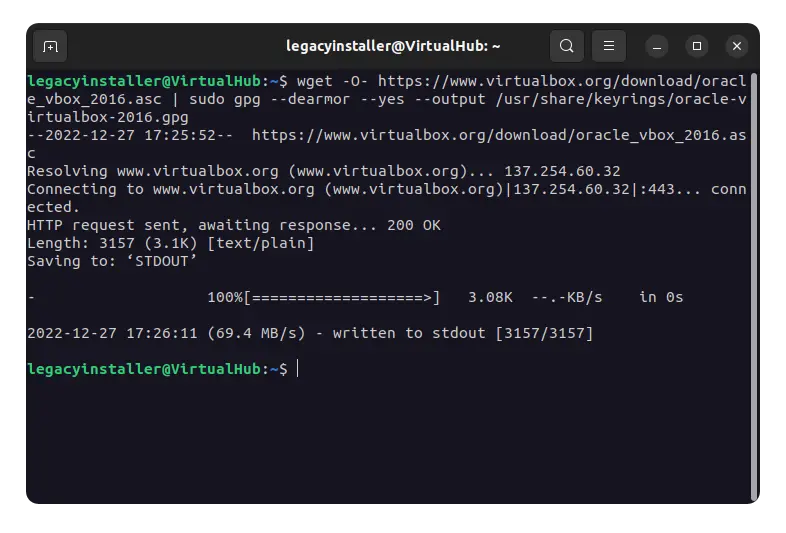
Now we will add Oracle's repository. Run the following command:
sudo nano /etc/apt/sources.list.d/virtualbox.list
Copy the following:
deb [arch=amd64 signed-by=/usr/share/keyrings/oracle-virtualbox-2016.gpg] https://download.virtualbox.org/virtualbox/debian jammy contrib
Press Shift+Ctrl+V to paste it. Then press Ctrl+O to save and Ctrl+X to close the file.
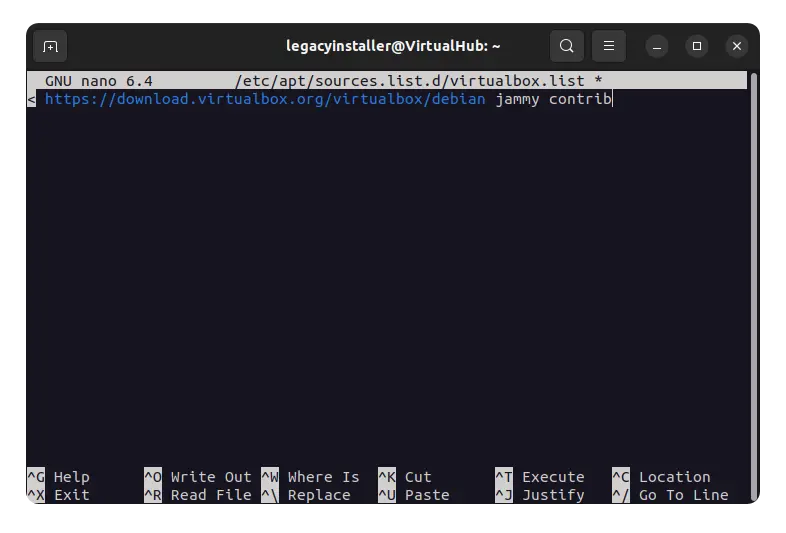
Update the package index:
sudo apt update
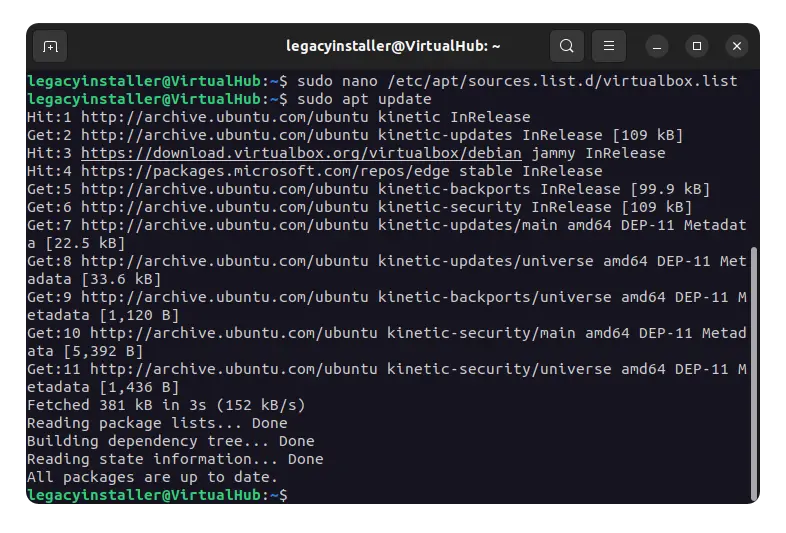
Now install VirtualBox:
sudo apt install virtualbox-7.0
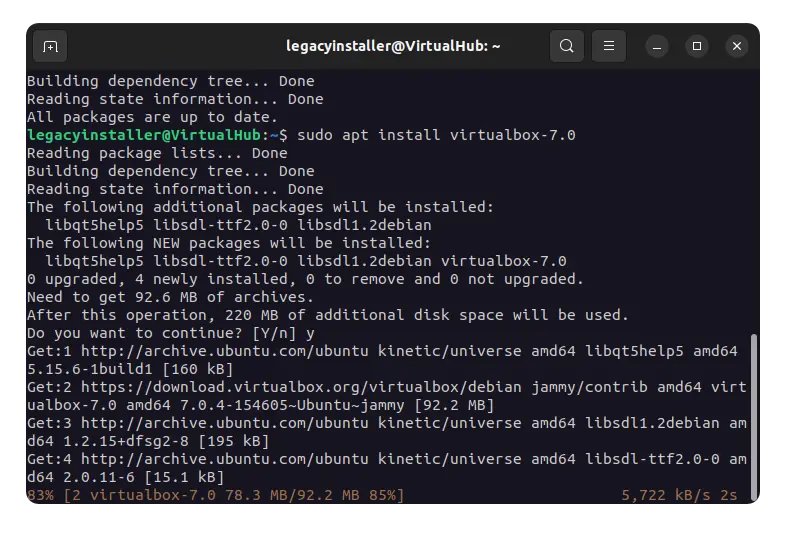
sudo apt install virtualbox-7.0
Add yourself to the vboxusers group:
sudo usermod -a -G vboxusers username
Replace username with your account username. Now, logout and login back.

VirtualBox is installed. You can start using it.
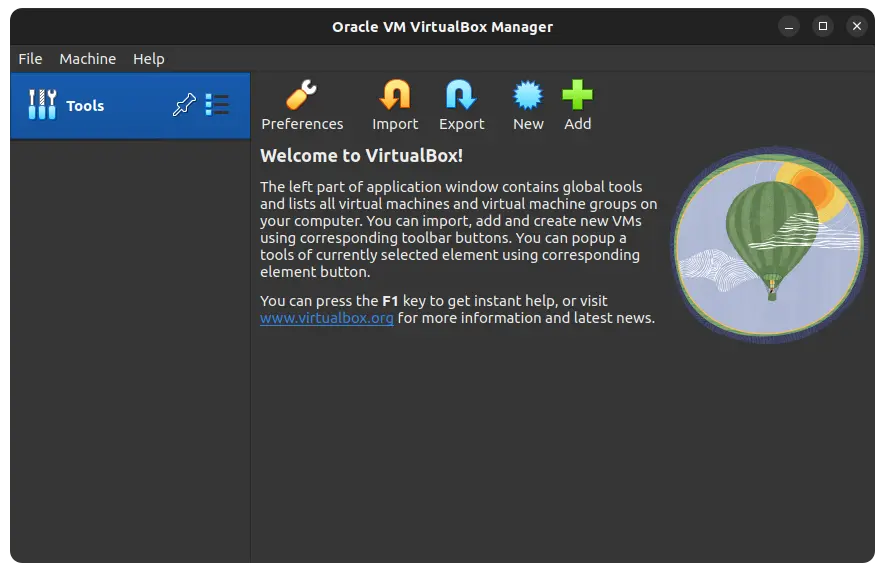
Windows
If you are on Windows, refer to the VirtualBox manual and VirtualBox download page for instructions on how to install it.
Oracle VM VirtualBox Extension Pack
While VirtualBox is free and open source and hence anyone can use it for free, some features for VirtualBox are released as "Oracle VM VirtualBox Extension Pack". It is not FOSS, but is free for non-commercial use. If you want to use it commercially, you need to get a license from Oracle. To install it, download it from VirtualBox download page.
Open VirtualBox, then click on File > Tools > Extension Pack Manager.

Now click on Install and choose the extension pack you just downloaded.
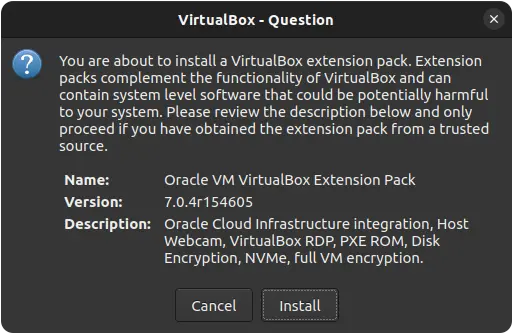
Click on Install.

Scroll down the License and click on I Agree.
Give your password when asked to do so. The installation will start and then complete. That's it.
To go back to the Welcome screen, click on the menu beside the Tools in the sidebar and click on Welcome.
Documentation
If you want to read the VirtualBox manual, you can access it by clicking on Help > Contents... in VirtualBox. You can also read it in your browser here. You can download a PDF copy of the manual from VirtualBox download page.
Credits
Video tutorial
Do you want to follow the tutorial by watching a video? We will post a video on our youtube channel soon.
Archives of this tutorial are available on Wayback Machine.
Tell us about your experience of this page on Discord. Or, just come and chat with us about old software. Join and say “Hi!”:
